There are certain physical features that distinguish some dogs from others. These can consist of anything from size to color, but there’s one classification that stands out among the rest: Brachycephalic dogs. These easily recognizable breeds have facial features that stand out, like their short and wrinkly noses and smooshed-in faces.
These unique facial shapes, however, come with a considerable cost. There is a lot of controversy surrounding the breeding of brachycephalic dogs due to the health conditions that can come with their unique features. In this article, we’ll learn a bit more about this breed type, the controversy with them, and the dogs impacted.
What Does it Mean to be Brachycephalic?

Brachycephalic dogs have a pushed-in facial appearance due to the short bones in their skull.
©humonia/iStock / Getty Images Plus via Getty Images
Before we discuss brachycephalic breeds, we should first define what it means to be brachycephalic. This condition comes as a result of misshapen skull bones, which are smaller than that of a normal dog. These shortened bones give the face of a dog a more squished appearance. In fact, the origins of the term come from Greek words for “short head,” which is certainly fitting. Many find these flat-faced dogs adorable, but they come with a heavy price.
The Risk That Comes With This Condition

Your dog’s brachycephalic traits might be perceived as cute, but they might also be causing them to develop health conditions.
©hedgehog94/Shutterstock.com
Unfortunately, the features that brachycephalic dogs possess are actually quite harmful. There are several reasons why this is so, but the most pressing is their inability to breathe in a proper manner. This condition is known as “Brachycephalic Obstructive Airway Syndrome,” also known as BOAS, and it is one that nearly all of these dogs possess.
BOAS, essentially, involves difficulty breathing as a result of an obstructed palette. Symptoms of this include heavy breathing, inability to receive proper levels of oxygen, and upper respiratory conditions. The best way to combat BOAS, which only occurs due to the intentional breeding of dogs with at-risk features, is to avoid pre-adopting or otherwise intentionally contributing to the breeding of these dogs.
Why Some Are Against The Breeding of Brachycephalic Dogs
These health risks are, unfortunately, avoidable. As you may know, dogs only carry certain traits because they have been deliberately bred to carry them. The more that people find brachycephalic traits to be appealing, the more inclined breeders are to intentionally breed these dogs. Therefore, there are certain professionals who advise against purchasing “purebred” brachycephalic breeds, like pugs or French bulldogs. This isn’t to say that you should pass up rescuing one if you’re interested in adopting from a shelter, but actively seeking out these breeds is, according to some, directly contributing to the problem.
Now, let’s take a look at ten of the most popular brachycephalic dog breeds, as well as their risk factors for BOAS.
1. French Bulldog
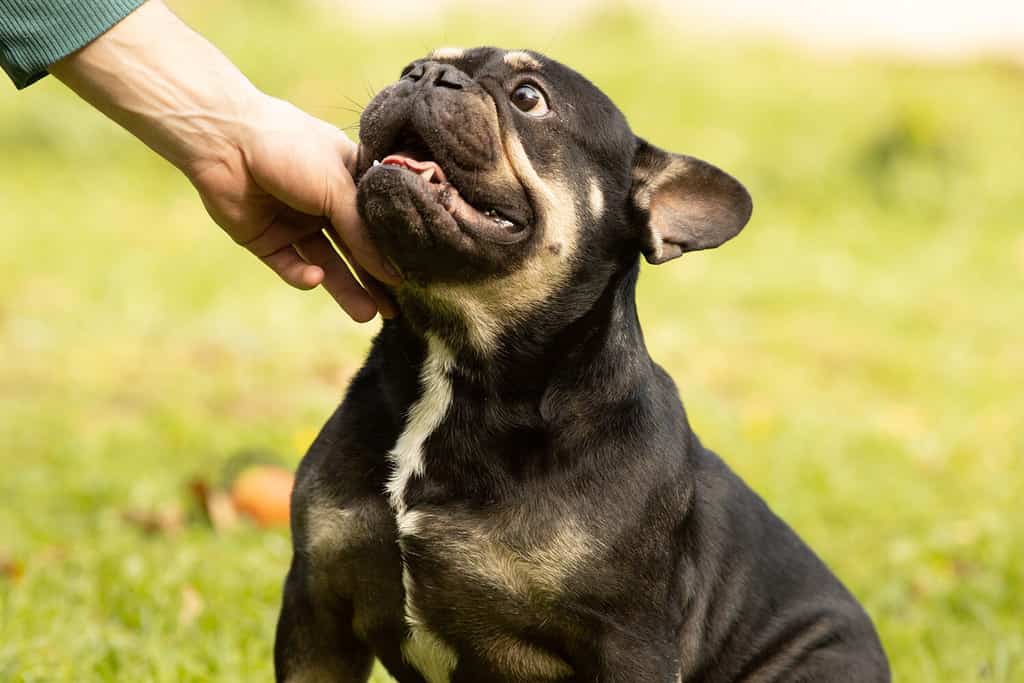
French Bulldogs are among the breeds that are extremely likely to have BOAS.
©Sevostyanova Tatyana/Shutterstock.com
Our first breed is the French bulldog, an adorable dog that grows to be between 16 and 28 pounds. These dogs were actually intentionally bred in the 1800s to be a smaller version of their English counterpart. French bulldogs make fantastic companions and are great additions to any household. They get along very well with small children and are generally known to be cheerful and social. However, they are also one of the brachycephalic dog breeds most likely to have “clinically significant signs” of BOAS. In fact, these signs are found in nearly half of all French bulldogs.
2. English Bulldog
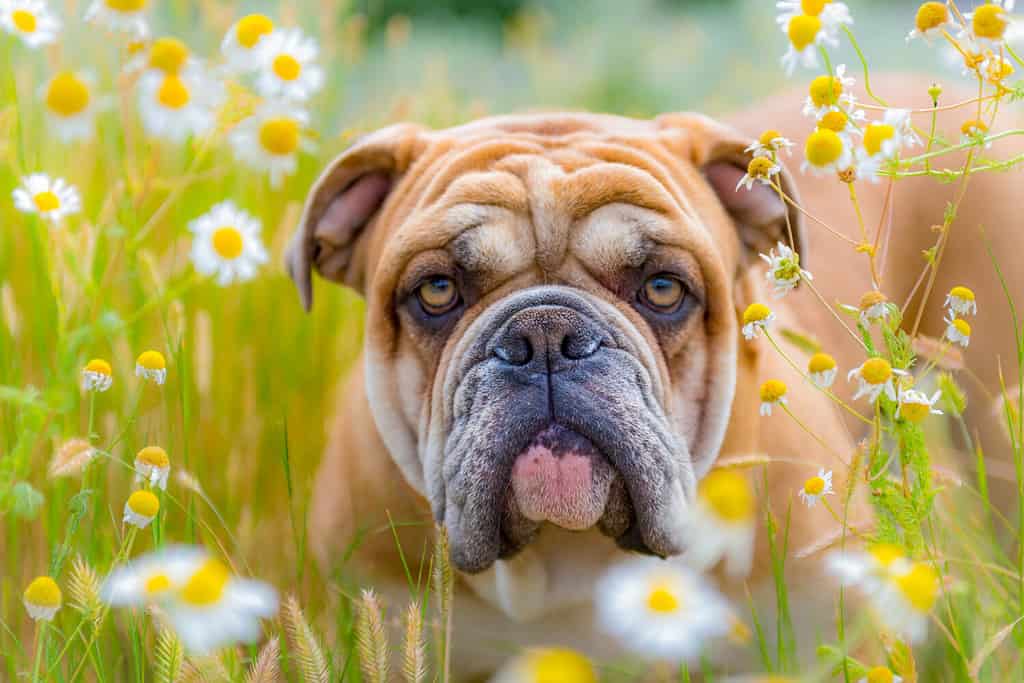
English bulldogs have been around since the 1200s.
©BGSmith/Shutterstock.com
The English bulldog is an ancient breed that has existed for centuries. These wrinkly dogs are known to be one of the most affectionate breeds, regardless of their tough appearance. Though their traits are quite cute and loveable, they result in a predisposition for a number of health issues. One of these, of course, is BOAS. In addition to this unfortunate ailment, they are also highly susceptible to things like hip dysplasia, respiratory issues, and skin conditions.
3. Boxer
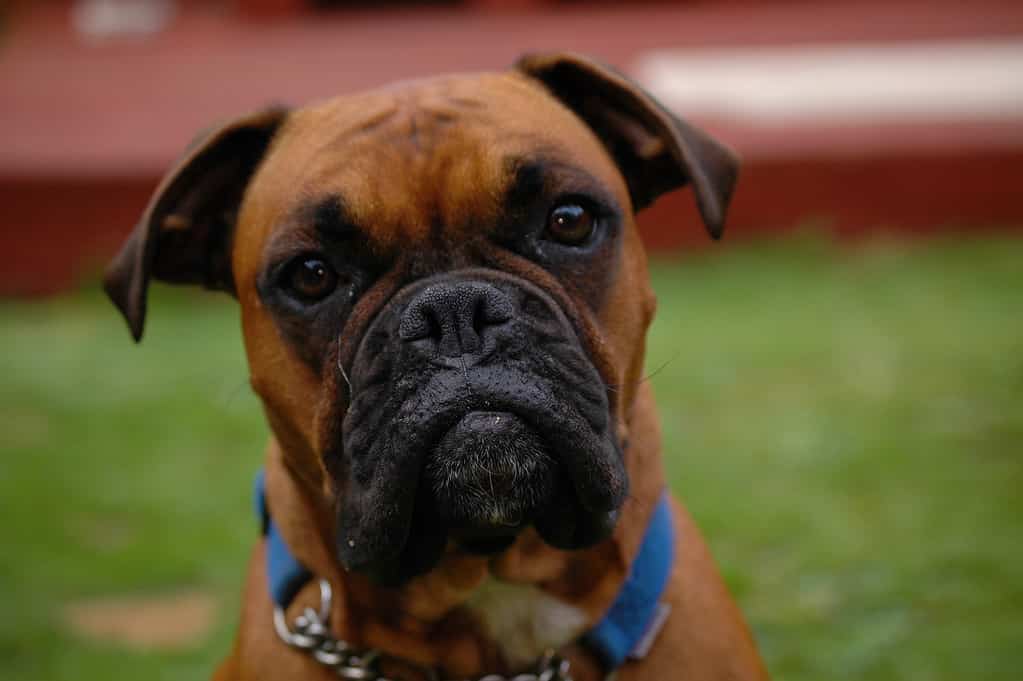
Loyal, social, and fierce protectors, boxers are a great addition to any home.
©iStock.com/Brandon Anderson
Boxers are wonderful breeds for several reasons. Aside from their adorable appearance, their personality is full of excitement and playfulness. A loyal protector, you can rest assured that your home is safe with a boxer there to keep things in order. Though their characteristics mean that they are susceptible to BOAS, there is a lesser risk for them than some other dogs featured on this list.
4. Boston Terrier
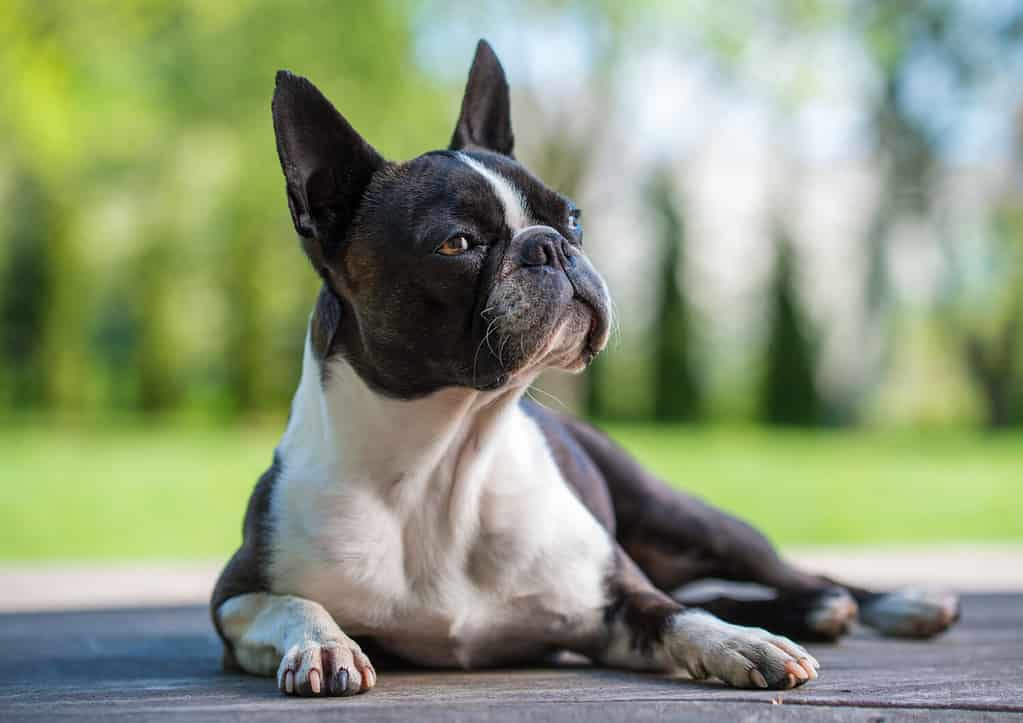
BOAS is incredibly common in the Boston terrier breed.
©bubutu/Shutterstock.com
The Boston terrier originated in the United States in the 19th century (I’ll give you three guesses as to which city it was in!) Known as the “American Gentleman” due to their refined-looking appearance and kind demeanor, there’s a lot to love about this small-medium breed. BOAS is, unfortunately, very common in this breed. So much so that they need to display only one or two symptoms before a veterinarian diagnoses them.
5. Pekingese

The
Pekingese
dog breed certainly has an attitude that reflects its royal origins.
©Sasa Dzambic Photography/Shutterstock.com
Pekingese dogs originate from China and were considered to be quite the royal pets for a long time. This treatment has clearly made an impact on their attitude, as this breed is known for its independence and sometimes stubborn nature. Despite this, though, Pekingese dogs have a deep love for their family and loved ones. Due to their features, many Pekingese dogs are, unfortunately, impacted by BOAS.
6. Chinese Shar-Pei
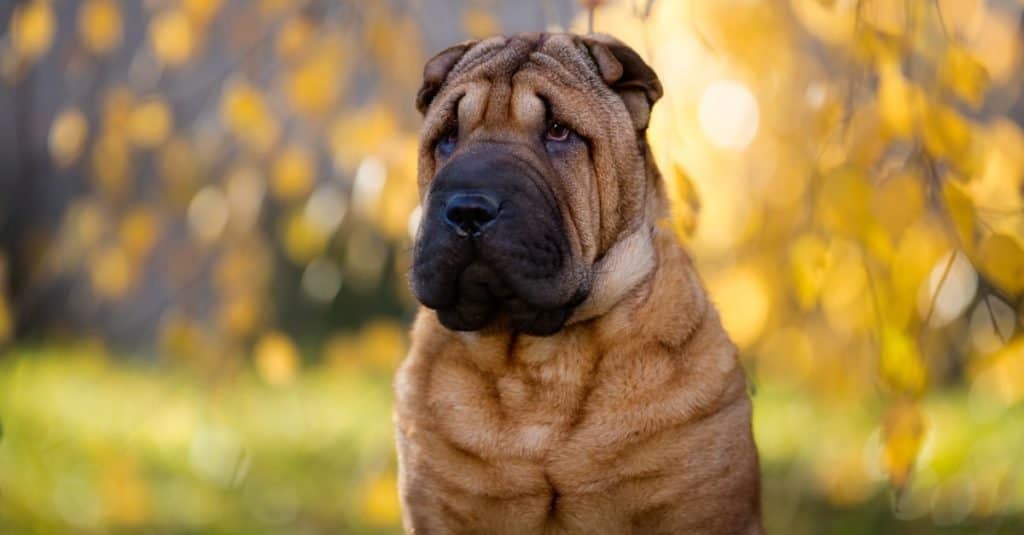
The Shar-Pei is easily recognizable due to its deep wrinkles.
©Liliya Kulianionak/Shutterstock.com
The Chinese Shar-Pei has a history that spans thousands of years. Well-known for its deep wrinkles, the Shar-Pei needs routine cleaning and maintenance to remain healthy and free from infections. The effort, however, is well worth it. Shar-Peis are incredibly loving and affectionate toward their families and won’t hesitate to protect them from any untrustworthy strangers. This is also a breed that is highly susceptible to having BOAS.
7. Pug
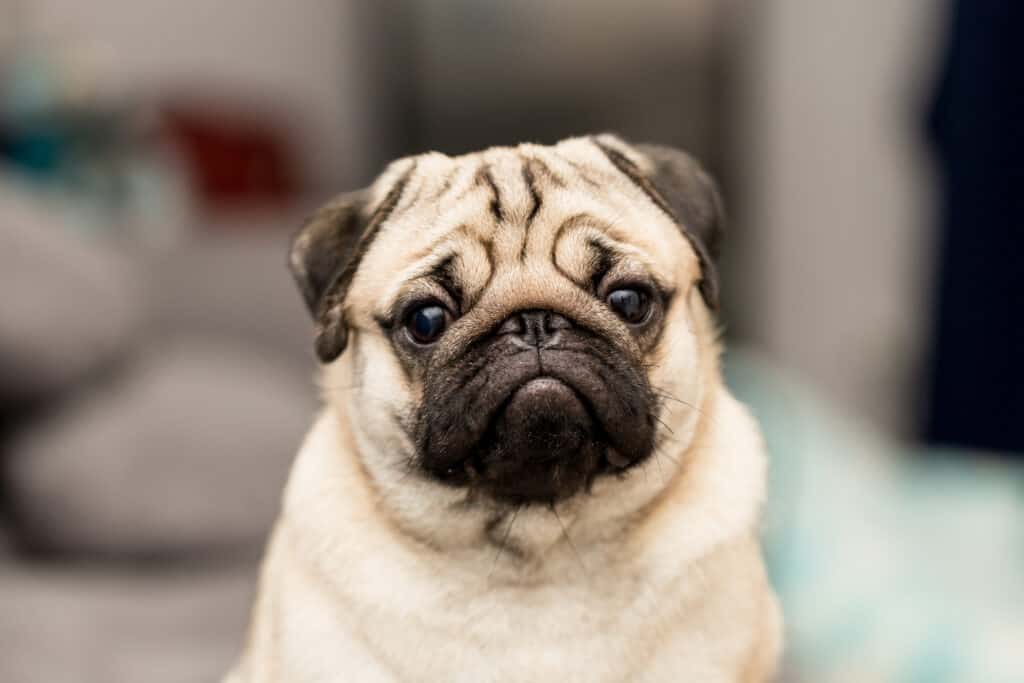
Pugs are arguably the most highly recognizable breed of brachycephalic dogs.
©220 Selfmade studio/Shutterstock.com
There are few other breeds that display quite as heavily brachycephalic traits as the pug. Pugs have a 50% chance to develop BOAS, and as they continue to be specifically bred to favor these characteristics, the number has only increased. Pugs are cuddly, lazy, lovely dogs that are extremely rewarding to have as pets. However, they are also a breed that is especially likely to develop several unfortunate health conditions.
8. Lhasa Apso

If you see a dog with luscious, flowing fur, it’s likely a
Lhasa Apso
.
©iStock.com/f8grapher
The Lhasa Apso originates from Tibet and is highly associated with Tibetan monasteries due to the breed’s historic service as sentinel dogs. Known to be confident and independent, what the Lhasa Apso lacks in popularity, they certainly make up for in uniqueness. Although their long, flowing fur is their trademark, they also have some standard brachycephalic traits. They have a predisposition to develop BOAS, but this risk is not as high as some other flat-faced breeds.
9. Shih Tzu

Shih Tzus used to be highly valued by Chinese royalty.
©Michael Mong/Shutterstock.com
Though they also originated from Tibet, the Shih Tzu we know today was truly cultivated in China. These tiny, energetic furballs were highly valued during the Ming and Qing dynasties. Despite their small size, which is usually only between 10 to 15 pounds, these dogs have a very prominent streak of confidence and charisma. An incredibly popular breed, they are also susceptible to some unfortunate conditions. One of these is, of course, BOAS. In addition to BOAS, your Shih Tzu might also experience ailments like hip dysplasia, eye issues, and dental problems.
10. Bullmastiff
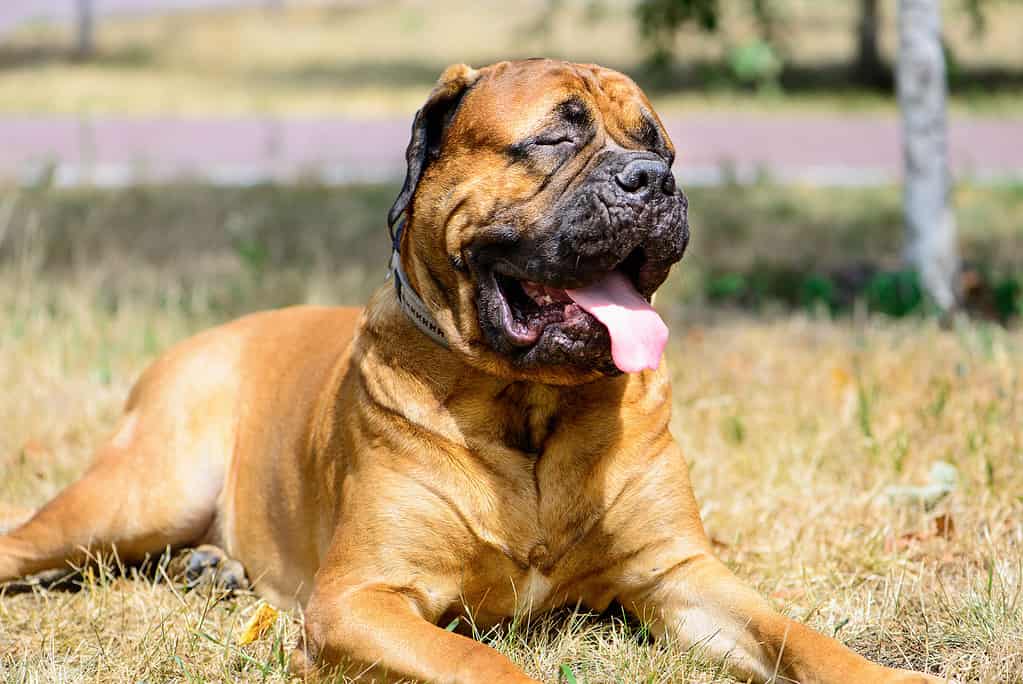
Despite their large and domineering appearance, the Bullmastiff is truly a gentle giant.
©iStock.com/Astakhova
Last but certainly not least, we have one of the largest brachycephalic dogs, the Bullmastiff. These dogs have been known, historically, to be guardians and protectors. Don’t let this sense of duty distract you from their true personality, though: Deep down, these dogs just want to snuggle and spend time with their beloved owners. Unfortunately, Buffmastiffs have a predisposition to BOAS due to their short faces. This condition is not observed in all dogs of this breed; however, just a fair portion.
The photo featured at the top of this post is © Khilenko Anastasiia/Shutterstock.com
Ready to discover the top 10 cutest dog breeds in the entire world?
How about the fastest dogs, the largest dogs and those that are -- quite frankly -- just the kindest dogs on the planet? Each day, AZ Animals sends out lists just like this to our thousands of email subscribers. And the best part? It's FREE. Join today by entering your email below.
Thank you for reading! Have some feedback for us? Contact the AZ Animals editorial team.







